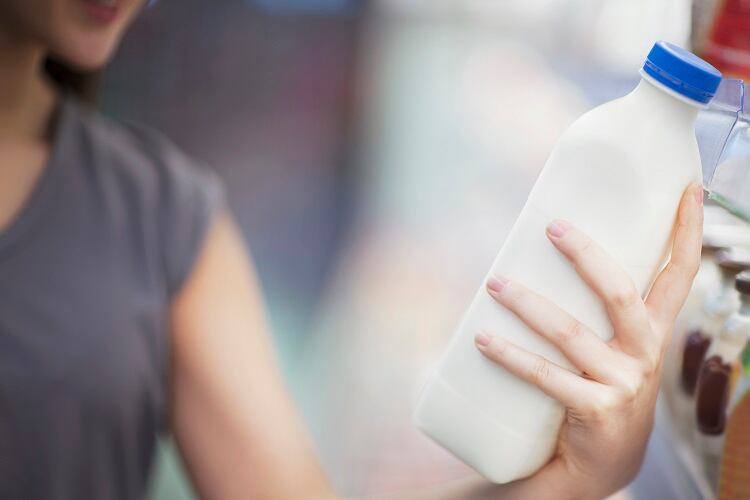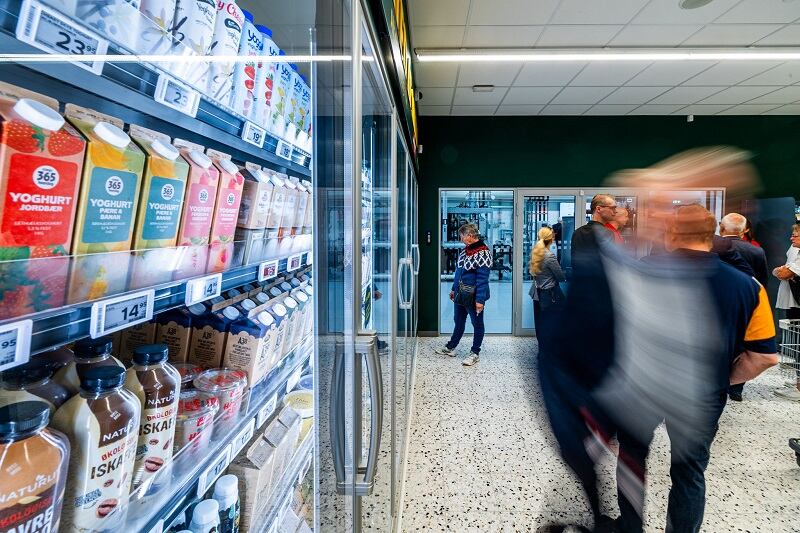In developed countries, most food waste occurs in the home. And much of that, according to consumer research, is tied to confusion around ‘use by’ and ‘best before’ labelling.
Eurobarometer research suggests that 53% of consumers do not know the meaning of ‘best before’ labelling, and 60% do not know the meaning of ‘use by’.
But fresh research out of the US suggests consumers are more focused on the date in question rather than the label phrases themselves.
Drivers behind food waste decisions
That consumers are confused by ‘use by’ and ‘best before’ labelling is largely undisputed. A 2021 study published in the Journal of Nutrition Education and Behavior suggested that only 64% of US adults could correctly explain what the ‘best if used by’ label meant. Just 44.8% were able to describe the meaning of ‘use by’.
‘Best before’ labelling indicates the date after which an item of food may still be eaten but may not be at its best in terms of quality.
‘Use by’ labelling indicates the date after which an item of food is no longer safe to eat
In recent years, anti-food waste advocates have worked to address this misunderstanding by rewording such labels. Too Good To Go – a digital marketplace that connects businesses that match surplus food with consumers looking to ‘rescue’ these meals – launched a campaign to add a new packaging label directly after the ‘best before’ text on certain products: ‘often good after’. Unilever, Carlsberg, and Arla Foods were among the manufacturers to adopt the new label.
What new research published in Waste Management throws in doubt, is whether current date label reforms focusing on label phrasing is the best approach to combatting food waste.
The study, authored by researchers from The Ohio State University, used eye-tracking technology to determine whether consumer decisions to throw foodstuffs away was based on the date stamped on the container or the label phrasing.
The researchers chose to focus their study on milk because it is widely consumed and represents around 12% of all food wasted by US consumers. A total of 68 participants took part in the study, during which they were showed different milk bottles samples – both physical and digital – carrying different dates and label phrases such as ‘sell by’, ‘best if used by’, and ‘use by’.
Eye-tracking technology revealed that 50% of study participants declared their intent to throw away milk based on the date stamped on the container – without ever looking at the label phrasing in front of the date. The participants looked at the date more frequently and laid their eyes on the date 44% faster than on the phrase.
‘Firms need to push dates further out’
“The milk was intentionally made to smell a bit sour, and it didn’t really fundamentally change the fact that people really focus on the date,” explained Brian Roe, professor of agricultural, environment and development economics at The Ohio State University.
Indeed, while the quality of the milk affected participants’ intent to throw it away, the quality factor did not influence what participants spent the most time looking at on the label.
According to Roe, the findings align with previous studies in which the intention to throw away food was driven by the label date and not the phrase. “But we were surprised that over half of the viewing sessions featured no attention on the phrase whatsoever. The date is salient – you have to reference it against the calendar. It’s more actionable than the phrase is.”

In the US, policymakers are working towards settling on a universal two-phrase system: one that focuses on quality, and the other on safety. Roe believes it is still important to narrow down phases to just two. “But that’s only the beginning – there needs to be a broader conversation about pushing those date horizons back to help minimise food waste.”
The professor continued: “If you’re going to have an education campaign, it helps to have a set of phases out there that people can cling to – but in the end, so few actually look at the phrase. They look at the date.
“The date signifies a point after which you can expect quality to degrade. If you can get firms to push that date further out, then people are going to be wiling to use the milk, or whatever it is, for a few more days, and waste a lot less food.”
Retailers take action on ‘best before’ dates
In the UK, retailers have already moved in this direction by revaluating ‘best before’ dates for fresh produce.
M&S recently announced plans to remove dates from more than 300 fruit and vegetable products – making up 85% of the retailers’ produce offering. Instead, M&S is replacing this phrasing with a new code store colleagues can use to ensure ‘freshness and quality is maintained’.
In 2022, retailer Co-op also removed date labels from several fresh produce lines as part of an ongoing trial. The same company is also revaluating label phrasing in the dairy aisle, taking the decision to scrap ‘use by’ dates from its own-brand yoghurts. The ‘use by’ dates have been replaced by ‘best before’ dates.
Retailer Morrisons has done the same for 90% of its own brand milk and is encouraging consumers to use a sniff test to help reduce food waste in the home.
“Good quality well-kept milk has a good new days’ life after normal ‘use by’ dates – and we think it should be consumed not tipped down the sink,” said Ian Goode, senior milk buyer at Morrisons at the time.
“So we’re taking a bold step today and asking customers to decide whether their milk is still good to drink. Generations before us have always used the sniff test – and I believe we can too.”
Source: Waste Management
‘When considering whether to waste food, consumers focus attention on food label dates rather than phrases’
Published online 12 June
DOI: https://doi.org/10.1016/j.wasman.2023.06.006
Authors: Aishwarya Badiger, Talia Katz, Christopher T. Simons, Brian E. Roe.




